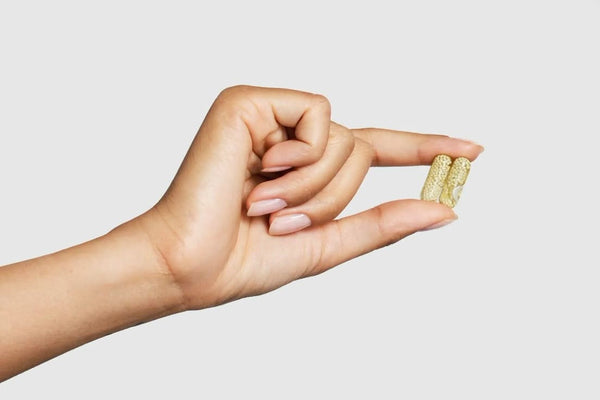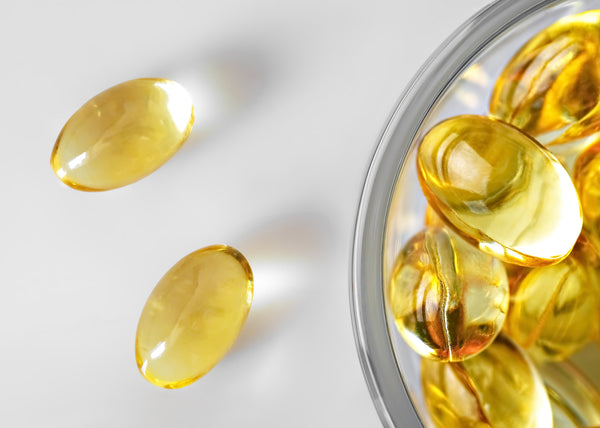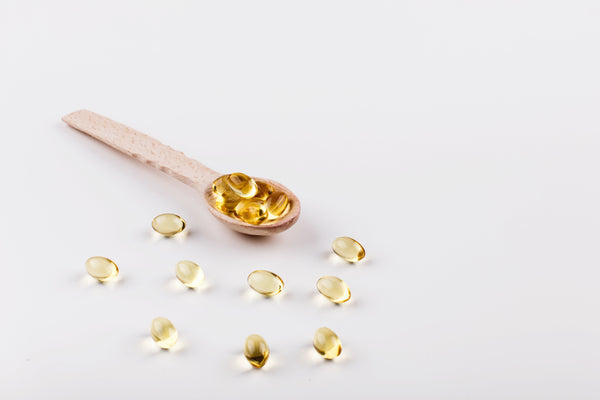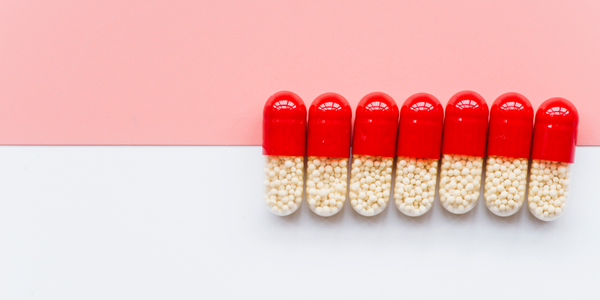Can’t afford a manicure at the salon? No problem!
We know using a stick-on nail could instantly make your nails look straight out of a salon, but what if we told you you could rock those nails without resorting to such cover-ups?
You must have heard a lot about hair care routines and skincare routines, but have you ever heard of a nail care routine? We all tend to ignore our nails a bit too much. They deserve as much care and attention from you as your skin and hair do. This blog post will take you through 4 home remedies and essential dos and don’ts for improving your nail health. We'll also help you choose the right nail polish for your nails. So, stay with us!
Common Nail Health Issues and Their Causes
-
Yellowing of Nails
One of the most common problems that people face is the yellowing of their nails. If your nails get a yellow tint only after you remove the nail polish, it could be because of the pigments in the nail polish. This is temporary and fades away quickly. But if your nails are always yellow, it could indicate a condition called yellow nail syndrome. It’s a condition that affects not only your nails but also your lungs and limbs. However, it could also be caused by a fungal infection, hyperthyroidism, or liver-related diseases. So make sure you meet your doctor and figure out the real cause before you use our nail whitening remedy for your nails.
If your nails aren’t structurally strong, they tend to break easily. It could be because of a zinc or iron deficiency, but mostly it’s related to moisture. Too much and too little moisturization can weaken your nails, making them split and break frequently.
-
White Spots on the Nails
Have you ever seen milky-white spots on your nails? These spots indicate a disease called punctate leukonychia. It is caused by frequent nail biting and banging your nails against a surface. If you’re always wearing too-tight footwear, that could also cause such white spots.
-
Dry Cuticles
Cuticles serve as a physical barrier that prevents fungal and bacterial infections. Hence, it is important to maintain their health. Your cuticles can often get too dry when there’s a lack of moisture. Washing your hands too often or brushing your nail polish remover on the cuticles could also cause dryness in the cuticles.
-
Swelling or Redness Around the Nails
Redness or swelling are signs of some sort of fungal or bacterial infection in your nails. Please consult your doctor to determine the real cause of this swelling.
4 Home Remedies To Take Care of Your Nails
An expensive manicure isn’t the only way to make your nails look and feel beautiful. You can do it at home too. We’re sharing some home remedies that you can start using right away to make your nails stronger, healthier, and beautiful.
-
Use Vitamin E
Vitamin E is a potent antioxidant that can help improve pigmentation that is developed due to UV exposure. This antioxidant can stimulate nail growth and improve the health of your cuticles. You can also use it to treat yellowing nails.
How to use it?
All you need are some vitamin E capsules available at pharmacies or creams that contain vitamins. The former is a better choice. Just pin a hole in one of the capsules and apply the vitamin E oil to your nails and cuticles. Massage every nail nicely for at least 2–3 minutes. Vitamin E oil will also help restore moisture in your cuticles. Keep the oil on your nails for at least half an hour before you wash it away.
-
Lemon Water Bath
A lemon water bath for nails is a simple yet effective method to improve nail health. The natural acidity of lemon juice helps to cleanse the nails and remove dirt, stains, and bacteria. To prepare a lemon water bath, begin by squeezing the juice of one fresh lemon into a bowl of warm water. You can add a few drops of olive oil or coconut oil for added hydration if desired. Soak your nails in this mixture for about 10–15 minutes, allowing the lemon juice to work its magic. Gently scrub your nails with a soft brush to remove any impurities, then rinse your hands thoroughly with warm water and apply a moisturizing nail and cuticle cream to lock in the benefits. If you don’t have nail and cuticle creams, you can also use vitamin E oil or regular Vaseline to retain moisture. Regular use of this lemon water bath can contribute to healthier, cleaner, and stronger nails over time.
-
Change Your Nutrition
The way you look has a lot to do with what you eat. If you eat nutritious food, you will ultimately look good on the outside. When it comes to nail health, certain nutrients are more important than others.
Nutrients for nail health
- Iron & Zinc: deficiency is associated with brittle nails
- Vitamin A, D, C, and B6: deficiency is associated with a condition called Hapalonychia (soft nails)
- Biotin: deficiency leads to discolored, deformed, and distorted nails.
- Vitamin B12: deficiency is associated with nail hyperpigmentation
- Protein: low protein intake can slow down the process of nail formation and might also make them weaker.
Foods that you need to eat to fulfill these nutritional requirements:
Increase consumption of millets, eggs, fish, nuts and seeds, and fresh fruits and vegetables to get all your minerals and vitamins for your nails.
Leveraging nutritional supplements:
Consider this example: There’s a person who has been eating seafood for many years. Seafood is rich in B12, collagen, and other nutrients. Logically, this person should never experience B12 deficiency, but his body still lacks B12. The only logical explanation is that the nutrients in the food are not getting absorbed into his body.
Your body has to do a lot of work to digest the food and get nutrients from it. At times, this absorption doesn’t happen that effectively. This is where supplements come into play. They provide you with nutrients in a very easy-to-absorb form. It gives you all the nutrients you need without putting too much load on your body while also ensuring full absorption. You can choose a multivitamin containing the above-mentioned nutrients to give you the best nails. Also, look for ingredients like omega-3 fatty acids, collagen (amino acids), spirulina (contains protein, iron, and vitamins A, B12, and B6), glutathione (amino acids), and curcumin (antibacterial), which contains minerals and vitamins for nails. Most of the nutrients we talked about are also essential for your hair and skin. So, having a multivitamin also gives you vitamins for hair & skin.
Tea Tree Oil
Tea tree oil has potent antimicrobial and anti-inflammatory properties that can help you treat and prevent nail fungus. It is being used extensively in cosmetic products like shampoos, soaps, liquid body washes, etc. You can buy a bottle of concentrated tea tree oil and use it on your nails.
How to use tea tree oil to treat nail fungus?
To treat a fungal infection with tea tree oil, you need to first clean your nails and trim the affected nail area. Don’t overdo it, or you might get a cut, which will further spread the infection. Once you are done cleaning the affected area, do the following steps:
- You’ll need a carrier oil like olive oil, coconut oil, etc.
- Mix a few drops of tea tree oil in your carrier oil and put a cotton bud or swab into it.
- Use this cotton swab to apply oil to the affected area.
- Don’t use the same cotton swab on other areas of your nails to prevent the fungus from spreading.
- Wait until the oil is absorbed into your nail; do not cover it with socks or anything else.
- Repeat it twice a day.
How to use tea tree oil to maintain nail health?
- Dilute the oil in a carrier oil and simply massage it on your fingertips and nails.
- Leave it for half an hour.
- Wash it off with lukewarm water
- Lock in the moisture using an oil-based moisturizer like Vaseline.
Expert Tips, Dos & Don’ts
-
Don’t bite your nails
Did I hit the nail on the head? Use a fidget spinner to release your anxiety, not your nails. Constant nail biting makes the skin near your nails sore. This results in countless problems, including the deformation of nails.
-
Don’t trim your cuticles
If you go to a salon for a manicure, they will undoubtedly trim your cuticles. Many individuals do that at home, too, because trimmed cuticles give your nails a very clean look. The reality is that cuticles serve as a protective layer. If you trim it, your skin will be exposed to different germs and fungi. If you still want to have that clean look, you can push back your cuticles and only trim them slightly. And please sanitize your tools before and after you are done trimming the cuticles.
-
Keep your nails dry.
A fungal infection is very commonly spread in damp areas. So make sure you wipe your nails dry, especially your toenails, after washing them.
-
Shape your nails in a round shape to avoid chipping
If you do know how to shape your nails, please give them a nice round/oval shape. Square, lipstick, flare, and other shapes can make it easy for your nails to get stuck in fabric and break.
|
Type |
Pros |
Cons |
|
Traditional nail polish |
Easily removed, ensuring lesser contact time of acetone and skin |
Darker colors can cause temporary yellowing (it fades after some time) |
|
Non-Toxic Nail Polish |
-Easy removal -Can be good for sensitive skin |
There haven't been any health hazards researched yet. |
|
Gel Polish |
Stays on your nails longer than other nail polish |
-Direct exposure to UV light -The aggressive removal method can cause harm to your nail plate and the skin around it -May make your nails brittle & dry |
|
Dip Powder Nails |
-As durable as gel polish -Does not impart the “nail polish smell” |
-Since many people dip their nails in the same powder jar, the chances of infection are higher -Removal process can damage the nail plate |
-
Don’t use your nails as tools
Stop using your nails as a cutter to open Amazon boxes and cat food cans. Nails are sturdy and very handy, but if you keep doing this, you’ll make your nails weak.
-
Wear gloves while performing household chores to avoid chipping
If you often see your nails getting chipped while doing household chores, you can start wearing gloves.
-
Use a fine file to shape the nails if they are weak and prone to breaking.
A lot of nail cutters come with a metal file; please don’t use that. Use a fine nail file that does the job gently without causing any damage to your nails.
-
Try not to follow internet trends
Nail art trends, quick fixes, and 5-minute nail hacks are very alluring, but try to avoid them. Do not follow any random remedy without proper research.
Wrapping Up
That’s it! You are ready to flaunt those fabulous nails!
Start by noticing your nails a bit more often than you usually would. That alone is a good way to start caring for your nails. Make slow and steady changes to your diet and take help from dietary supplements to get your vitamins for hair & skin & nails. Choose your nail polish wisely. Non-toxic nail polishes are by far the safest choice. Lastly, keep your nails clean and trim them regularly. Even if you do these few things, you’ll start noticing visible changes in your nail health.
References:
https://ijdvl.com/nails-in-nutritional-deficiencies/
https://my.clevelandclinic.org/health/diseases/23009-yellow-nail-syndrome
https://www.frontiersin.org/articles/10.3389/fphar.2023.1116077/full
https://www.aocd.org/page/BrittleSplittingNail
https://dermnetnz.org/topics/white-nail



























 DOWNLOAD NOW
DOWNLOAD NOW
